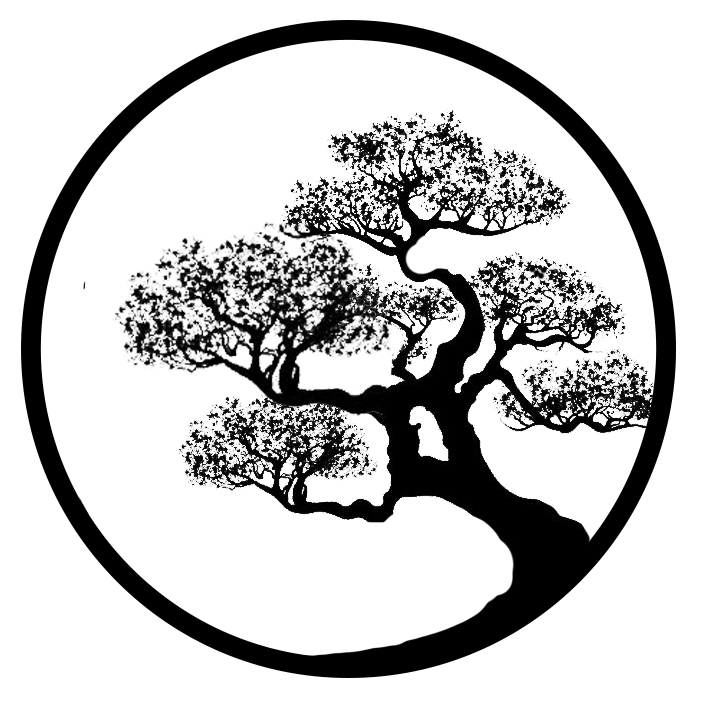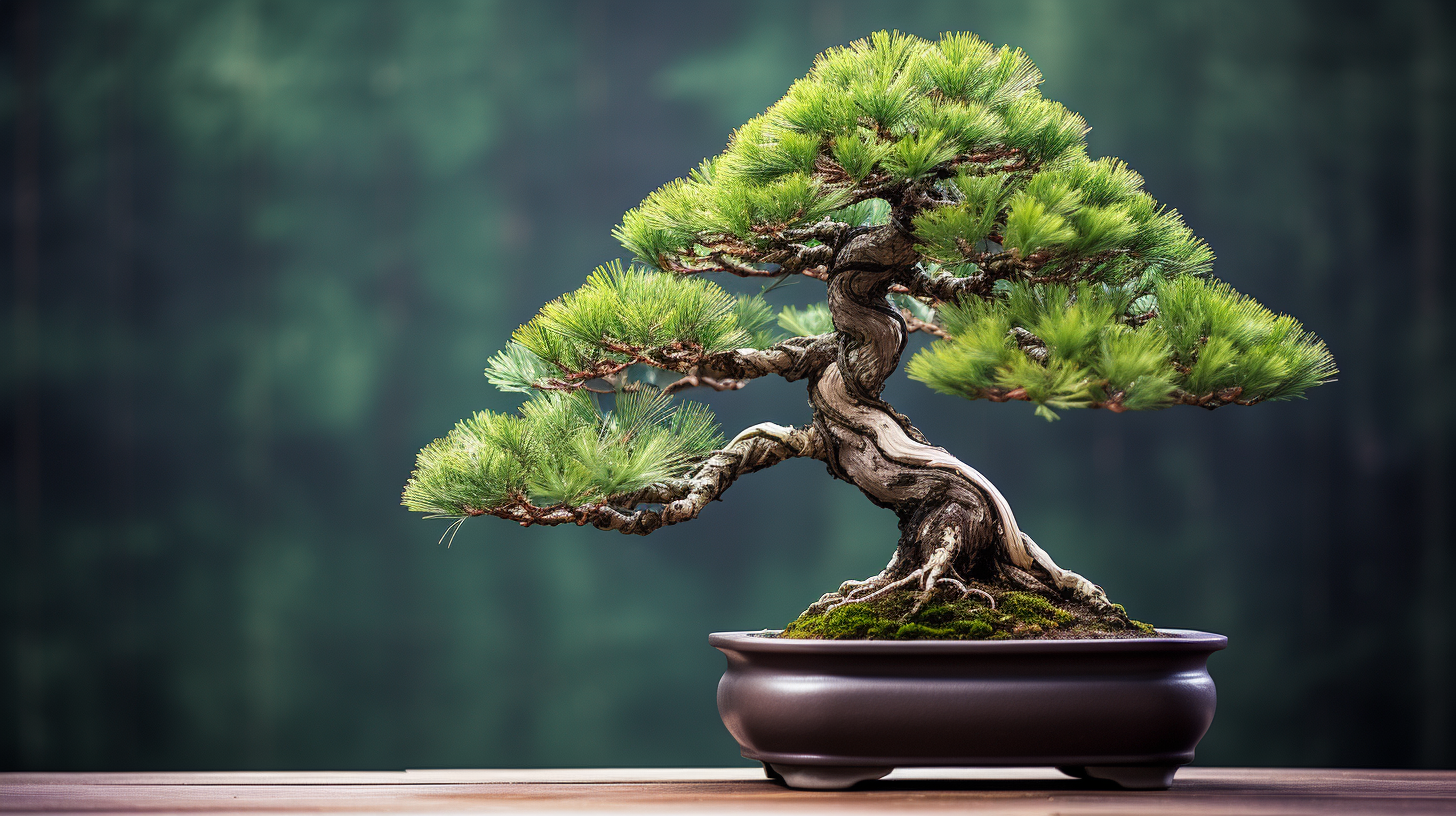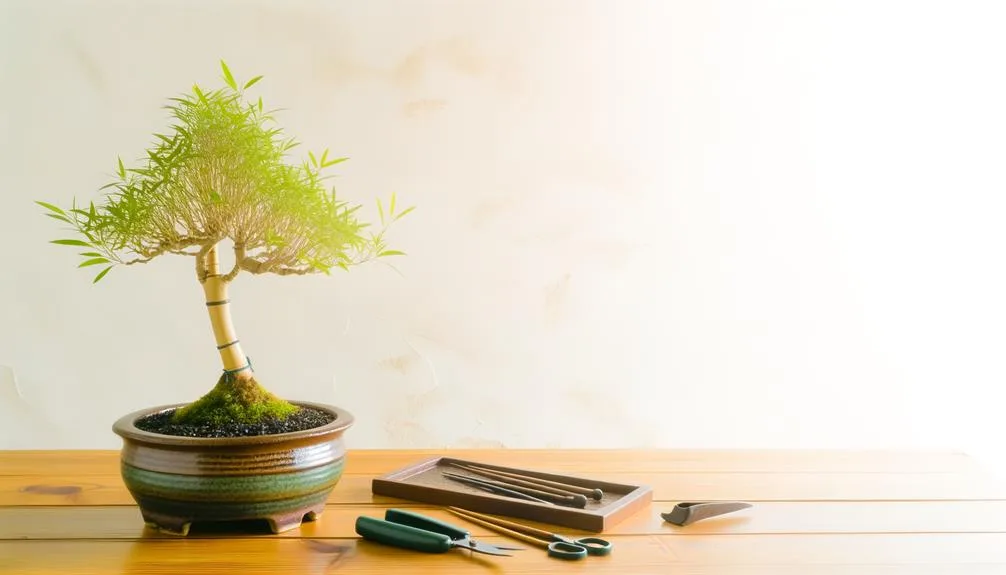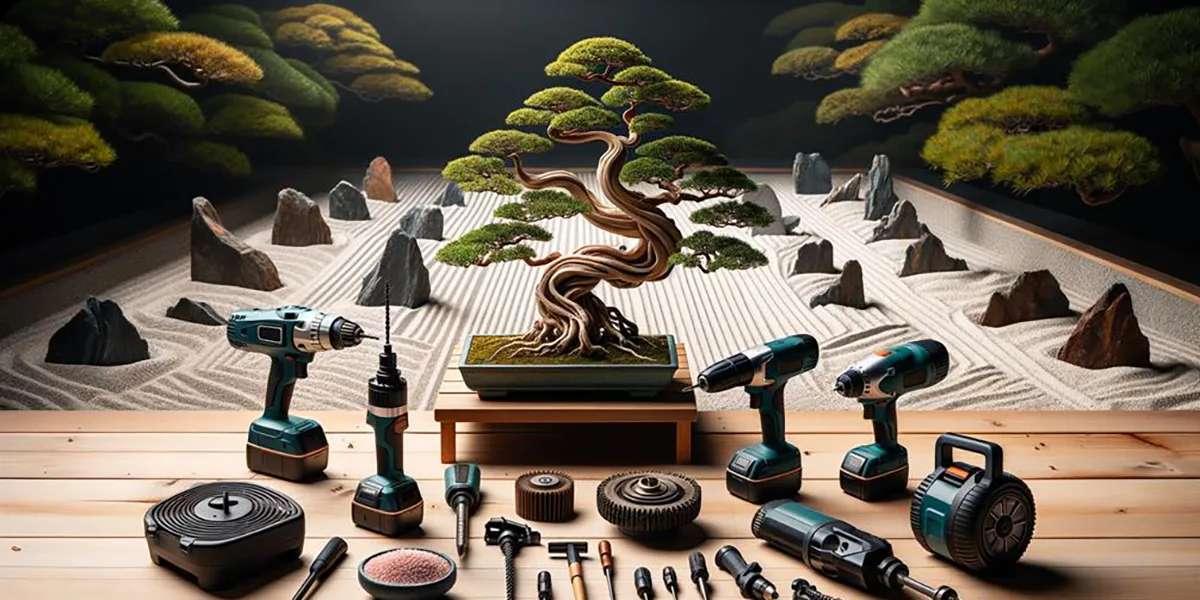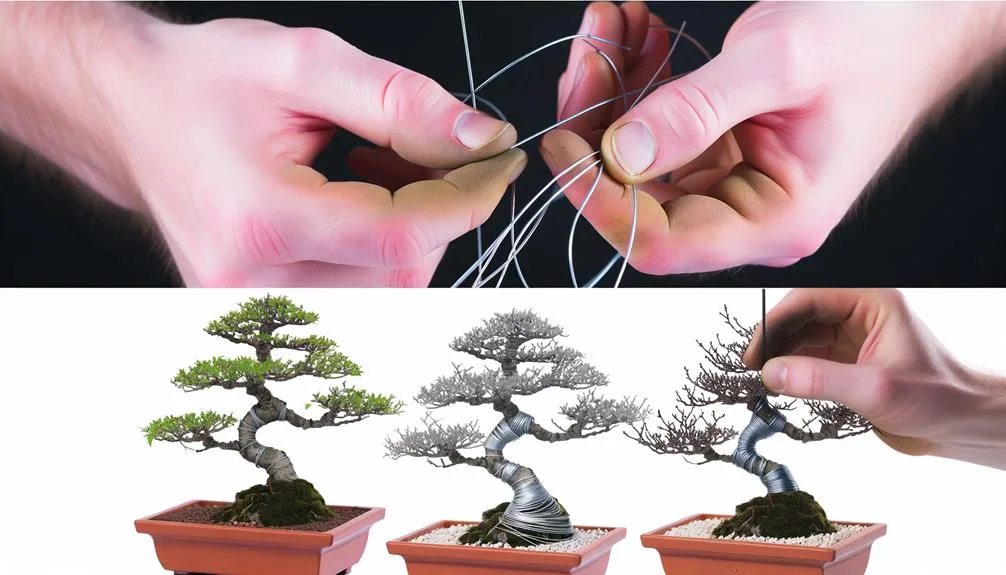The world of Pine Bonsai offers a unique blend of aesthetic beauty and horticultural challenge. These miniature trees, revered for their longevity and adaptability, have captivated enthusiasts worldwide. In this section, we explore the diverse species of Pine Bonsai and their distinct characteristics.
Pine Bonsai Care
Pine Bonsai, a symbol of strength and endurance, requires careful cultivation and maintenance. Each species, from the robust Japanese Black Pine to the delicate Bristlecone Pine, presents its own set of care requirements. Understanding these nuances is key to successful growth and styling.
The techniques for watering, fertilizing, and pruning Pine Bonsai vary significantly across species. For instance, the Japanese White Pine prefers a more delicate approach to pruning, while the Scots Pine is more forgiving and adaptable to various styling methods. This diversity in care practices not only enhances the horticultural experience but also allows for a wide range of creative expression.
Challenges in Pine Bonsai cultivation are not uncommon, especially when adapting to different climates. Whether grown indoor or outdoor, these trees demand attention to detail and a deep understanding of their environmental needs. From selecting the right soil mix to mastering the intricacies of watering schedules, each aspect plays a crucial role in the health and beauty of the bonsai.
In the next section, we delve deeper into the specific species of Pine Bonsai, highlighting their unique care requirements and aesthetic appeal.
Key Takeaways
- Pine Bonsai cultivation combines art and horticulture, requiring patience and skill.
- Different Pine species offer unique aesthetic and care requirements.
- Essential care includes proper watering, soil composition, fertilizing, pruning, and styling.
- Challenges like pest control, climate adaptation, and indoor cultivation are part of the learning process.
- Pine Bonsai holds significant cultural and historical value, symbolizing strength and endurance.
- The practice of Pine Bonsai cultivation is a meditative process that fosters a deep connection with nature.
Exploring Pine Bonsai Trees
Diving into the world of Pine Bonsai, we encounter a variety of species, each with its unique charm and care requirements. Let’s explore some of the most popular ones.
Japanese Black Pine (Pinus thunbergii) stands out with its rugged appearance and strong growth. It’s a favorite among bonsai enthusiasts for its resilience and ability to withstand aggressive pruning. This species thrives in full sun and requires well-draining soil. Regular fertilizing during the growing season ensures its vigorous health.
Japanese Red Pine (Pinus densiflora) offers a more delicate aesthetic. It’s known for its softer needles and lighter bark. This species prefers slightly acidic soil and moderate watering, making it a bit more challenging to maintain. Its styling often highlights the natural elegance and grace of the tree.
Japanese White Pine (Pinus parviflora) is celebrated for its gentle, flowing branches and soft, blue-green needles. It demands careful watering to avoid root rot and prefers a sunny location. The maintenance of this species involves thoughtful pruning to maintain its aesthetic appeal.
Scots Pine (Pinus sylvestris), known for its adaptability, can thrive in various climates. It has a distinctive, textured bark and robust needles. This species is particularly forgiving, making it suitable for beginners. Regular pruning and fertilizing are essential to maintain its compact form.
Ponderosa Pine (Pinus ponderosa), with its thick bark and long needles, is a striking choice. It requires ample sunlight and a well-draining soil mix. This species is known for its growth vigor and responds well to styling techniques.
Each of these species brings its unique beauty and set of challenges, offering a rewarding experience for both novice and experienced bonsai practitioners.
Choosing the Right Pine Bonsai
In selecting the appropriate pine bonsai, it is essential to consider factors such as climate compatibility, species characteristics, and personal aesthetic preferences.
Begin by assessing your local climate conditions. Certain pines, like the Scots or Japanese black pine, can tolerate a wide range of temperatures. Carefully consider the bonsai’s intended location, taking into account variations in light, humidity, and temperature.
Next, examine the species’ characteristics. Some pines have distinctive bark patterns or needle structures that enhance their appeal.
Lastly, your personal aesthetic should guide your choice. Do you prefer a rugged, natural look or a more manicured appearance? Your pine bonsai should reflect your taste and integrate harmoniously into your space. Remember, bonsai is a living art form; your choice should resonate with you personally.
Essential Care for Pine Bonsai
Caring for Pine Bonsai involves a balance of several key practices, crucial for the tree’s health and visual appeal. Here, we outline the essential care techniques.
Watering Techniques for Optimal Health: Pine Bonsai require a consistent watering schedule. Over-watering can lead to root rot, while under-watering can cause the needles to dry out. The key is to water deeply when the topsoil feels slightly dry. Using soft, lime-free water can prevent needle browning.
Soil and Fertilizing for Pine Bonsai: A well-draining soil mix is vital for Pine Bonsai. A blend of akadama, pumice, and organic compost works well. Fertilizing should be regular but not excessive, especially during the growing season. Slow-release organic fertilizers are often recommended for their gentle effect.
Pruning and Wiring Methods: Pruning is essential for shaping and maintaining the desired form of the bonsai. Pine Bonsai can be pruned throughout the growing season, focusing on removing unwanted growth and balancing the tree’s energy. Wiring can be done to shape branches, but care must be taken to avoid damaging the bark.
Repotting Guidelines: Pine Bonsai typically need repotting every two to five years, depending on the species and growth rate. Spring is the best time for repotting, allowing the tree to recover during the growing season. When repotting, root pruning should be done cautiously to maintain the tree’s health.
Seasonal Care Variations: Pine Bonsai care varies with seasons. In winter, they need protection from extreme cold, while in summer, they may require shading from intense sunlight. Adjusting watering and fertilizing according to the season is crucial for the tree’s well-being.
Understanding and implementing these care techniques will ensure your Pine Bonsai remains healthy and aesthetically pleasing.
Essential Bonsai Care Tools
Once you’ve chosen your perfect pine bonsai, acquiring the right tools becomes the next critical step in ensuring its healthy growth and development. These tools enable effective pruning, shaping, and maintenance, leading to a thriving bonsai.
- Bonsai Pruning Shears: Essential for cutting branches and roots. Choose high-quality shears for clean cuts to prevent disease. Consider a smaller pair for delicate trimming.
- Bonsai Wire and Wire Cutters: Integral for shaping your bonsai. Aluminum or copper wire can be used. Select cutters specifically designed for bonsai to avoid damaging the tree.
Investing in these tools empowers you with precise control, encouraging the best possible growth. Remember, proper tool care enhances longevity, ensuring they remain reliable for your bonsai’s needs.
Daily Care Routine for Pine Bonsai
Regularly attending to your pine bonsai’s daily care routine is a vital continuation of the good work started by using quality tools and proper techniques. Keeping a consistent schedule can ensure the health and beauty of your bonsai.
Start each day with an assessment of the tree’s moisture levels. Watering should be done early in the morning when the tree can absorb the most amount of water.
Pruning is a regular task which helps maintain the desired form. Pinching back new growth will keep the tree in shape and promote denser foliage.
Styling and Shaping Pine Bonsai
Styling and shaping are integral parts of Pine Bonsai cultivation, allowing each tree to express its unique character and beauty. Here we explore various techniques and styles.
Basic Styling Techniques: The first step in styling a Pine Bonsai is to understand its natural growth pattern. Basic styling involves pruning to create a desired shape and wiring branches to direct their growth. For Pine Bonsai, it’s important to maintain a balance between foliage and open space to achieve an aesthetically pleasing look.
Advanced Shaping Methods: For more experienced enthusiasts, advanced techniques like jin (creating a deadwood feature) and shari (removing bark to simulate age and weathering) can add dramatic effects. These methods require a deep understanding of the tree’s health and growth patterns to avoid causing harm.
Inspirational Pine Bonsai Styles: Pine Bonsai can be styled in various traditional forms, such as formal upright (Chokkan), informal upright (Moyogi), slanting (Shakan), and cascade (Kengai). Each style reflects a different aspect of nature, from a tree growing on a windy cliff to one cascading over a stream. The choice of style often depends on the tree’s natural inclination and the artist’s vision.
Styling and shaping Pine Bonsai is a creative and ongoing process. It requires patience, observation, and a gentle hand. Over time, these efforts result in a living art form that reflects both the beauty of nature and the skill of the grower.
Troubleshooting Common Pine Bonsai Problems
Common Challenges in Pine Bonsai Cultivation
Cultivating Pine Bonsai can present a range of challenges, even for experienced enthusiasts. Understanding and addressing these issues is key to maintaining the health and beauty of these miniature trees.
Identifying and Treating Pests and Diseases: Pine Bonsai are susceptible to various pests and diseases. Common issues include pine needle scale, spider mites, and fungal infections like needle cast. Regular inspection and prompt treatment using appropriate insecticides or fungicides are crucial. Natural pest control methods, such as introducing beneficial insects, can also be effective.
Overcoming Indoor Cultivation Challenges: While Pine Bonsai are traditionally outdoor plants, some enthusiasts attempt indoor cultivation. This can lead to problems like inadequate light, improper humidity levels, and poor air circulation. To successfully grow a Pine Bonsai indoors, it’s essential to replicate outdoor conditions as closely as possible. This includes using grow lights, maintaining humidity with trays of water, and ensuring good air flow.
Adapting to Climate Variations: Different Pine Bonsai species have varying tolerance levels to temperature and humidity. Understanding the specific needs of your bonsai and adjusting its environment accordingly is vital. In colder climates, providing winter protection is necessary, while in hotter regions, shielding the bonsai from intense midday sun is important.
Addressing these challenges requires a combination of vigilance, knowledge, and adaptability. By staying informed and attentive to the needs of your Pine Bonsai, you can overcome these hurdles and enjoy the rewards of this fascinating hobby.
Pine Bonsai in Different Climates
Adapting Pine Bonsai care to various climates is crucial for their survival and flourishing. This section explores how to tailor care practices for different environmental conditions.
Adapting Care for Various Environments: Pine Bonsai, like all plants, are affected by their surrounding climate. In areas with harsh winters, it’s essential to provide protection against frost, potentially moving the bonsai to a cold but frost-free area. In contrast, in hot and dry climates, increasing watering frequency and providing shade during the hottest part of the day can prevent stress and damage to the bonsai.
Case Studies of Pine Bonsai in Diverse Regions: Examining how Pine Bonsai are maintained in different parts of the world can offer valuable insights. For instance, in the humid climate of Japan, bonsai enthusiasts often focus on preventing fungal diseases, a common issue in such environments. In contrast, in the dry climate of the American Southwest, the challenge often lies in ensuring adequate moisture without over-watering.
Understanding the specific needs of Pine Bonsai in your local climate and adjusting care routines accordingly is key. This might involve changing the soil composition, altering watering schedules, or implementing seasonal protection measures. By doing so, you can ensure the health and beauty of your Pine Bonsai, regardless of where you live.
Frequently Asked Questions
What Is the Historical Significance of Pine Bonsai in Japanese Culture?
In Japanese culture, pine bonsai symbolizes longevity, wisdom, and peace. It has historical significance as a revered art form, reflecting the philosophical principles of harmony between nature and human beings, and the pursuit of spiritual enlightenment.
Is It Possible to Grow Pine Bonsai Trees Indoors?
Yes, it is feasible to grow pine bonsai trees indoors. However, it’s a delicate dance requiring careful attention to lighting, temperature, and humidity. They need a cool winter period, mimicking their natural outdoor environment.
Can Pine Bonsai Trees Be Grown From Seeds?
Yes, pine bonsai trees can indeed be cultivated from seeds. However, it requires patience and careful attention to detail as the germination process is slow and the seedlings are sensitive to environmental conditions.
How Long Does It Take for a Pine Bonsai Tree to Fully Mature?
The maturation timeline for a pine bonsai tree varies, typically taking 10-15 years when grown from seeds. However, this time frame can fluctuate based on factors such as species, growing conditions, and care techniques.
Are There Any Specific Environmental Conditions That Affect the Growth of Pine Bonsai Trees?
Yes, pine bonsai trees require specific environmental conditions for optimal growth. They thrive in cooler climates, need ample sunlight, and require well-draining soil. Humidity, temperature, and soil pH can also significantly affect their health and growth rate.
Conclusion
In this exploration of Pine Bonsai, we’ve traversed the realms of species selection, care techniques, styling, and the cultural significance of these magnificent miniature trees. Pine Bonsai cultivation is a rewarding journey that blends art, science, and a deep connection with nature.
From the rugged Japanese Black Pine to the graceful Scots Pine, each species offers its unique charm and challenges. Mastering the art of Pine Bonsai care – from precise watering and fertilizing to the delicate art of pruning and styling – requires patience and dedication. Yet, the reward is a living sculpture that grows more beautiful with time.
The challenges faced, whether it’s pest control, climate adaptation, or indoor cultivation, are all part of the learning curve. They teach resilience and adaptability, mirroring the very qualities of the Pine Bonsai itself.
Pine Bonsai is more than just a hobby; it’s a cultural artifact, a piece of living history, and a testament to the enduring beauty of nature. It invites us to slow down, to appreciate the subtleties of growth and change, and to find joy in the journey of nurturing something truly extraordinary.
